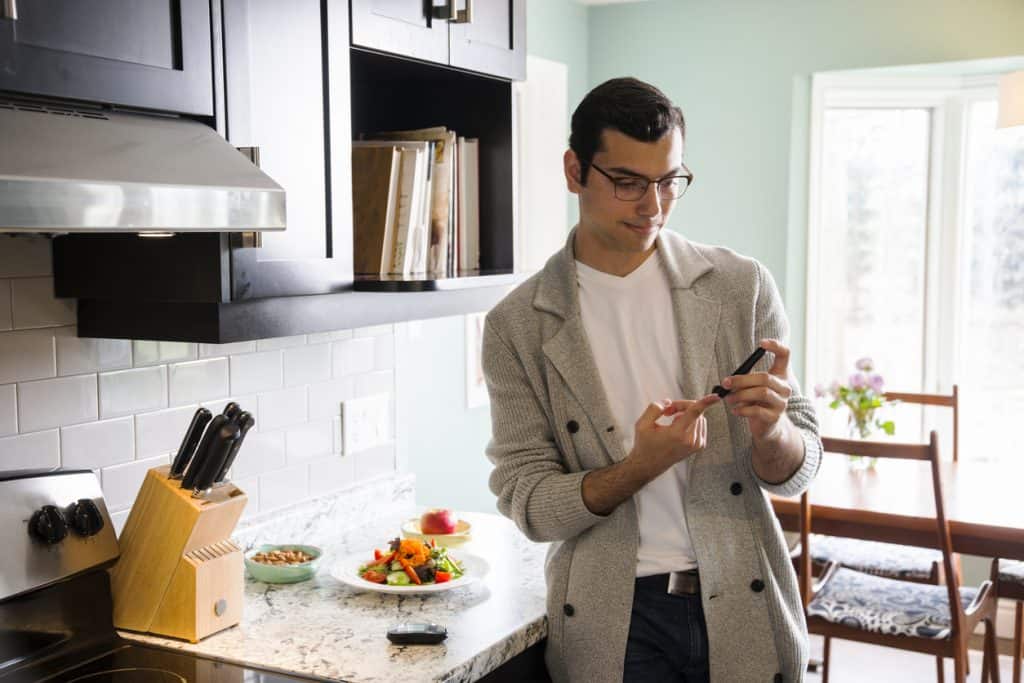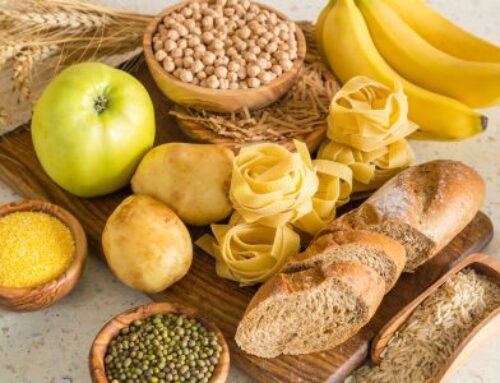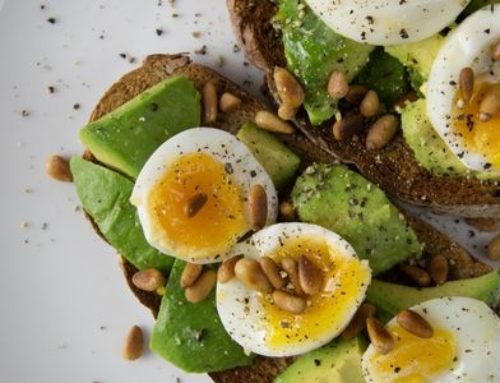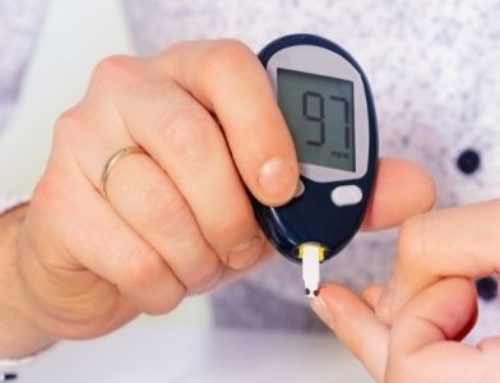
If you’re a bit concerned about your bloods sugar levels and possible insulin resistance, I have your back! Here are my top 5 ways to improve your blood sugar levels:
1. Swap in your fibre
The rise and fall of our blood sugar is largely controlled by the breakdown and absorption of carbohydrates and sugars from foods. Fibre can help to slow this process down and reduce the workload on our pancreas and insulin.
Not sure what I mean? Think about it this way:
Imagine your meal or snack as a bucket of Lego. When we eat, it’s like tipping that bucket onto the floor and asking our body to sift through and pick up (absorb) particular pieces and put them in a container (our blood). Sometimes it has to pull structures apart to get at the bits it wants (just like when you have to take apart your brother’s space ship to get at a piece you need for your own castle).
In this analogy, sugars are the little two-by-one blocks that are used to build just about everything. They are hard to find and are often jointed together in weird shapes (carbohydrates). Fibre is all the other Lego pieces that your body has to sift through to get at the two-by-one blocks.
If we had a bucket that was filled with just two-by-one blocks it would be really easy for our body to pick up handfuls of them and dump them into the container. This makes a lot more work for our pancreas and insulin which are trying to stop that container from getting too full. But by adding in all the other bits of Lego, our body has to spend a bit more time finding the two-by-one blocks, which makes it easier for insulin to control the volume the two-by-one blocks in the other container.
So, choosing high fibre options helps to slow the process of digestion, which makes it easier for insulin to control the volume of sugar in our blood.
If that didn’t leave you more confused (or even if it did), here are some great ways to swap in more fibre:
- Swap to wholegrain crackers
- Add more vegetables to your pasta meal
- Use wholemeal or high fibre pasta
- Add a sprinkling of bran to your breakfast cereal
2. Choose the right portions
If your goal is to improve blood sugar levels, a key strategy is to reduce the workload for your pancreas and insulin. One of the most effective ways to achieve this is to reduce the glycaemic load of your meals. Essentially this means lowering your portions of carbohydrate and sugar rich foods.
But as I often say, ‘low carb’ doesn’t mean ‘no carb’. Going ‘no carb’ can leave us ravenous and may prompt greater cravings for starchy and sugary foods, which it’s then easy to overdo and ramps up the workload for our pancreas and insulin.
So how do I moderate carbs? How do I find what’s right for me?
…Trial and error!
The right portion is different for everyone so it is good to start with a guideline and then decide for yourself if that is enough or too much. 150g of cooked carb rich foods is a good portion and can be a great basis to adjust from, based on your needs.
Try measuring these out and seeing what they look like on your plate:
- 1 cup cooked rice
- 2 slices of bread
- 2 small wraps or 1 large wrap
- 1 cup of chick peas/lentils/four bean mix
- 1 cup of pasta or couscous
You can increase or reduce these portions based on your activity and hunger levels. Working with a dietitian is the best way to discover what the right portion is for you.
3. Move
“You got ta move it, move it! You got ta move it, move it!! You got ta… MOVE IT!!”
The lemur from Madagascar had quite a few pearls of wisdom (after all ‘what is a simple bite on the buttocks amongst friends?’), but none more so than the need to move it and improve your blood sugar levels.
Moving our body stresses our body, which is a good thing! Stressing our body helps it to learn, adapt and get more efficient, particularly at processing and using carbohydrates. There are many studies that demonstrate that physical activity can improve insulin levels, fasting blood sugar levels and HbA1c measures in individuals with insulin resistance and/or Type 2 Diabetes (1, 2). Irrespective of your fitness level, moving your body and getting a little bit huffy-puffy (high intensity) several times throughout the week can increase your insulin sensitivity and make it easier for your body to manage blood sugar levels (1).
For individuals with Type 1 Diabetes, this holds true, but it’s important to track your BGLs when changing your exercise routine. Working with a dietitian, diabetes educator or exercise physiologist is a great way to figure out what exercise style, timing and intensity is right for you.
4. Lift heavy things
While any type of movement is going to help you manage blood sugar levels, there is no going past resistance exercise. It is one of the most effective ways to boost insulin sensitivity, which makes it easier for insulin to manage blood sugar levels.
There are receptors on our muscle fibres that respond to insulin and help to suck up the sugar from our bloodstream. Resistance exercise stresses our muscles and causes tiny tears in the muscle fibres. This sends our body into ‘repair mode’ and we end up building more muscle fibres to strengthen the muscle for future stress (our body is pretty amazing, hey!). The more muscle fibres we have, the more receptors we have for insulin and the easier it is for our muscles to suck up the sugar from our blood. VOILA!
What’s more, when our body is in ‘repair mode’ it’s much better at sucking up the sugar and using it to help repair the muscle. Our body can be in this repair mode for up to 3 days after resistance exercise. So, if we can include heavy lifting sessions 3-4 times a week, we’ll be operating with a much better ability to manage blood sugar levels.
5. Check your physiology
What’s the point in making changes to diet and exercise unless they’re influencing blood sugar levels? Not much. Understanding what’s going on physiologically is important for having an actual benefit to health.
There are tools to test your blood throughout the day and get an instant read on your sugar levels. These blood sugar level monitors are vital for people with Type 1 Diabetes, who must then adjust their insulin dose based on what their blood sugar levels are doing.
For individuals who don’t manage Diabetes with insulin, daily blood sugar level monitoring is not always necessary and can be quite confusing. These levels are highly influenced by many different factors and your test can change depending on what exercise you have done today (or yesterday), how stressed you are, if you’re sick, and what your last meal looked like.
It’s much more useful to get a measure of your body’s ability to cope with sugar and carbohydrates over time, because that’s better related to health outcomes than one, stand-alone blood sugar level. The best measures of this are a HbA1c and/or a HOMA Index.
HbA1c is a measure of how much sugar is ‘sticking’ to your red blood cells. If we have constantly high blood sugar levels, more of that sugar is going to ‘stick’. The HbA1c test counts the number of red blood cells that have sugar ‘stuck’ to them and gives you a percentage. Ideally, we would like to have a HbA1c of less than 7%.
HOMA Index is a measure of insulin resistance. It’s calculated based on how much insulin your body is producing and what your fasting blood sugar level is. It gives us an estimate of how hard your body is working to try and keep blood sugar levels within a normal range.
Getting a baseline measure of these things, and checking them every 3-4 months, is key to ensuring the changes you make to diet and exercise are actually improving your health. They are far more accurate than weight as a measure of progress.
Our dietitian’s can help you navigate the process of structuring your diet to manage your blood sugar levels and get your diabetes under control.
https://onlinelibrary.wiley.com/doi/10.1002/dmrr.2488/full
https://jap.physiology.org/content/118/12/1474




